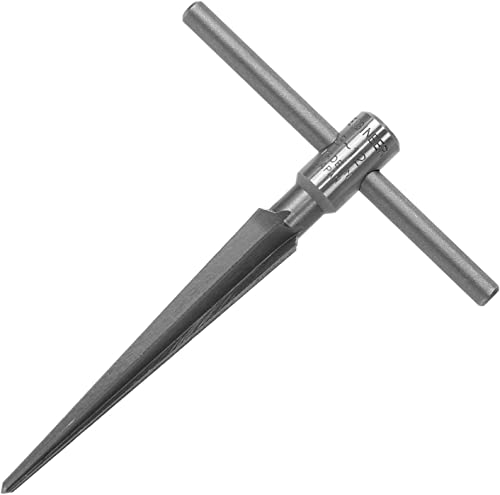Can a reamer be used on hardened materials?
Understanding Reamers and Hardened Materials
A reamer is a cutting tool used to create smooth, accurate holes in materials. It features multiple cutting edges and is typically used after a drill bit to finish and size a hole to precise measurements. Reamers are commonly used in industries such as manufacturing, automotive, aerospace, and metalworking.
Hardened materials, on the other hand, are materials that have undergone a heat treatment process to increase their hardness and strength. Examples of hardened materials include hardened steel, stainless steel, tool steel, hardened aluminum, and hardened alloys.
Can Reamers be Used on Hardened Materials?
While reamers are primarily designed for use on softer materials, they can also be used on hardened materials depending on the specific conditions. However, reaming hardened materials requires careful considerations and may require special tools or techniques.
When reaming hardened materials, a few factors need to be taken into account:
- Hardness: The hardness of the material is a crucial factor. Reaming hardened materials requires reamers with special coatings or materials that can withstand the increased hardness. Carbide or diamond-coated reamers are often used to effectively cut through hardened materials.
- Speed and Feed Rate: Reaming hardened materials requires slower cutting speeds and lower feed rates compared to softer materials. This helps prevent excessive heat buildup and tool wear.
- Lubrication: Proper lubrication is essential when reaming hardened materials to reduce friction and heat buildup. Using a lubricant designed for the specific material being reamed can help improve tool life and hole quality.
Tips for Reaming Hardened Materials
When reaming hardened materials, it’s important to follow certain tips and best practices to achieve optimal results:
- Choose the Right Reamer: Select a reamer that is specifically designed for hardened materials. Carbide or diamond-coated reamers are often the best choice as they offer increased hardness and wear resistance.
- Use Slow Speeds and Feeds: Reduce the cutting speed and feed rate to prevent overheating. Slow speeds and feeds help dissipate heat and minimize thermal damage to both the tool and the workpiece.
- Implement Proper Lubrication: Use a suitable lubricant for the specific material being reamed. The lubricant helps to reduce friction, heat, and tool wear.
- Control Heat Buildup: Monitor the temperature during the reaming process. Excessive heat can lead to premature tool wear or even damage to the workpiece. If necessary, consider using coolant or applying air to cool the tool or workpiece.
- Inspect the Resulting Hole: After reaming, carefully inspect the finished hole for any signs of surface damage, such as burrs or rough edges. If necessary, deburr the hole to ensure a smooth, accurate finish.
Limitations and Considerations
While reaming can be done on hardened materials, there are limitations and considerations to keep in mind:
- MATERIAL HARDNESS: Reaming should only be done on materials with a hardness within the capabilities of the reamer being used. Extremely hard materials may require other machining methods, such as grinding or EDM.
- TOOL WEAR: When reaming hardened materials, there is an increased risk of tool wear due to the hardness and abrasiveness of the material. Regular tool inspection and maintenance are important to ensure consistent performance and longevity.
- COST: Reaming hardened materials can be more expensive compared to reaming softer materials due to the need for specialized tools and coatings.
Conclusion
In conclusion, reamers can be used on hardened materials if the proper considerations and techniques are applied. The choice of the right reamer, controlling the cutting speed and feed rate, implementing proper lubrication, and monitoring heat buildup are crucial for successful reaming of hardened materials. However, it’s important to keep in mind the limitations and potential challenges associated with reaming hardened materials, such as material hardness, tool wear, and added costs. When in doubt, consult with experts or manufacturers to ensure the best approach for reaming hardened materials.






